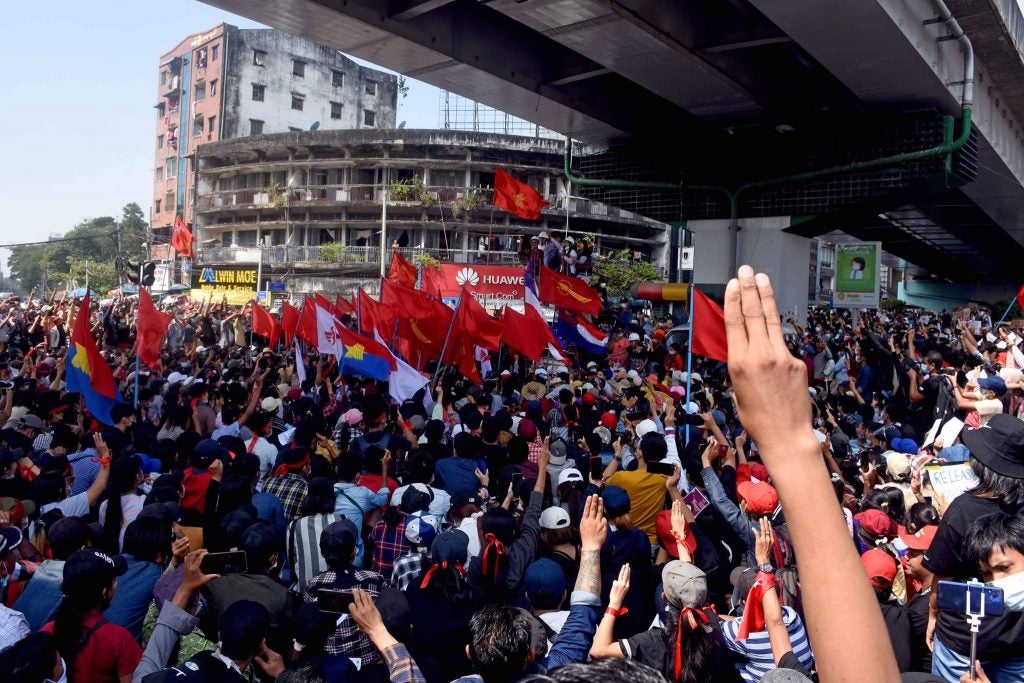Tensions in Myanmar Build as Protestors Gather in Streets and Fighting in East Leads to Thousands of Refugees Fleeing Military Offensives
Fears are growing as protests in Myanmar (also known as Burma) continue to grow following the seizing of power by the country’s powerful military on 1 February. Demonstrators are staging mass marches to support the democratically elected government of State Counsellor Aung San Suu Kyi and President U Win Myint, who have been arrested and now face trial.
Occasional skirmishes between troops and protestors have occurred, and at least one woman has been shot by the police.
Now the Tatmadaw – the country’s powerful military that ran the country for decades after independence – has began to call more troops into the cities to maintain control.
Observers are particularly concerned by the redeployment of several of the Tatmadaw’s feared Light Infantry Divisions (LIDs) to several cities where tensions are highest. The LIDs have a vicious reputation from years of fighting against the Ethnic Armed Organisations (EAOs) that have been resisting the Burma Army for generations.
The LIDs are hardly ever allowed away from the border areas where their use of brutal methods has been a standard feature in the long running civil conflict. Pictures of soldiers from LID 77 appearing in Yangon, Myanmar’s largest city and former capital, have caused particular alarm. The unit is notoriously savage even by the standards of the LIDs and was one of the main culprits of the ethnic cleansing of the Rohingya since 2016.
Meanwhile, while the international community’s attention is fixed on the developing situation in the central cities and the protests, fighting on the countries peripheries has flared, most recently between army and the Karen in the east. Here the military has launched an offensive looking to drive civilians away from their villages, and a humanitarian disaster is looming.
Dave Eubank, Director of the Free Burma Rangers – an NGO that supports refugees and casualties with relief teams in the areas – sent the following from the field after an attack on the village of Tha Kaw Toh Baw in Papun District:
“The Burma Army began shelling the village on the night of 14 February and continued into 15 February. All the villagers have now fled and we have a Free Burma Ranger relief team with them now. There are now over 5,300 Karen people displaced in northern Karen State as the Burma Army advances. The Burma Army is trying to crush all dissent in the cities and control all in the mountains where we are.”
With pressures mounting on the military both at home and abroad, it is highly likely that a more significant crackdown is imminent. The Tatmadaw’s generals have never been adverse to using violence to protect their interests, and the situation has led the United Nations special rapporteur on human rights in Myanmar stating that he is “terrified” that the situation is about to spiral into large scale bloodshed.

